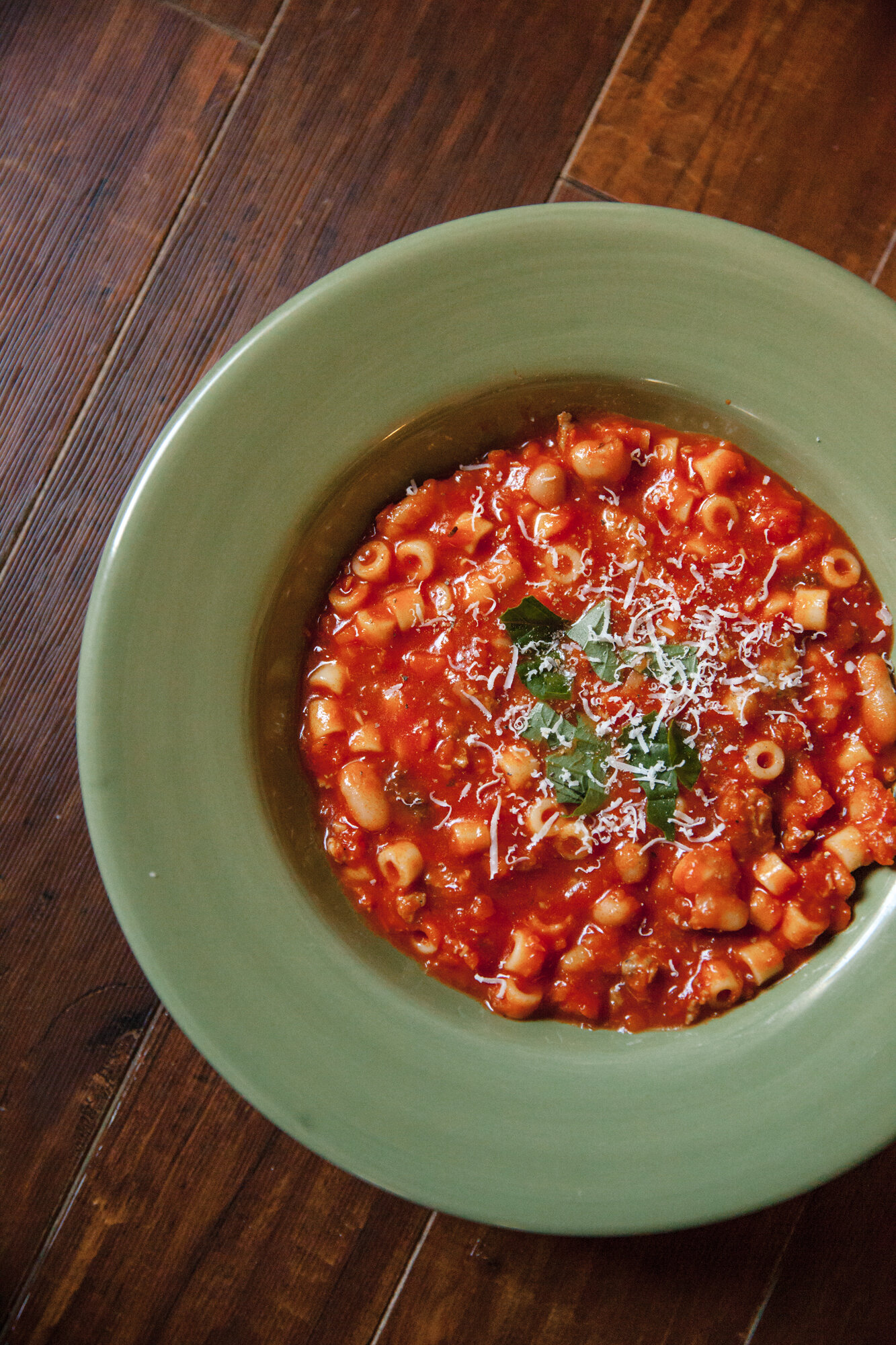Take Me Away Vegan Pastries
Peppermint Vegan Cannoli
November 16, 2020
Miso Soup
from 3 Recipes for Soup Season - for BC Living
November 10, 2020
I find that in many sushi restaurants, the miso soup is about 95 percent broth with a few teeny-tiny bits of tofu, and maybe some seaweed if you’re lucky. Well, at home, you get to control how many extras go in when you make it from scratch, and it’s actually super easy.
The issue for me with most of the instant versions of miso soup is that they are full of MSG (monosodium glutamate), to which I'm allergic, so making it myself helps me control exactly what is going into the soup.
If you're not a purist (seaweed, tofu, green onions), you can load up your miso soup with other veggies. My next batch I might add mushrooms, but you can toss in lettuce, onions, clams, bean sprouts, carrots, eggplant, anything! Just make sure that you add anything that needs to cooked/softened before you boil the dashi (instructions below).
INGREDIENTS
4 cups dashi (for vegan stock, follow this recipe)
3 tbsp brown miso
2 green onions, thinly sliced
Silken or medium tofu, cubed, at least 1 cup, more if you'd like
Wakame seaweed
INSTRUCTIONS
Make the dashi ahead of time (I made the vegetarian version with just the kelp, soaked in water overnight).
Add 4 cups of dashi to a pot and bring to a boil, then simmer.
Two options here: place miso in a small bowl and add a bit of the hot dashi, stirring to dissolve or add miso to the pot and whisk until dissolved. Make sure soup does not come to a boil.
Add the tofu after the miso is broken down and heat through.
In a pot or bowl, rehydrate the wakame seaweed (some packages have instructions) in lukewarm water for about 15 minutes. Then, drain and cut up into smaller pieces. Start with a small amount—you’ll be surprised at how much it grows.
Place some of the seaweed in a serving bowl, and add approximately 1 cup of the miso soup with tofu. Top with green onions and you're ready to eat!
NOTE: The homemade dashi should last about a week in the fridge. If you double the dashi, you can freeze it for a quicker soup another day!
Makes 4 cups

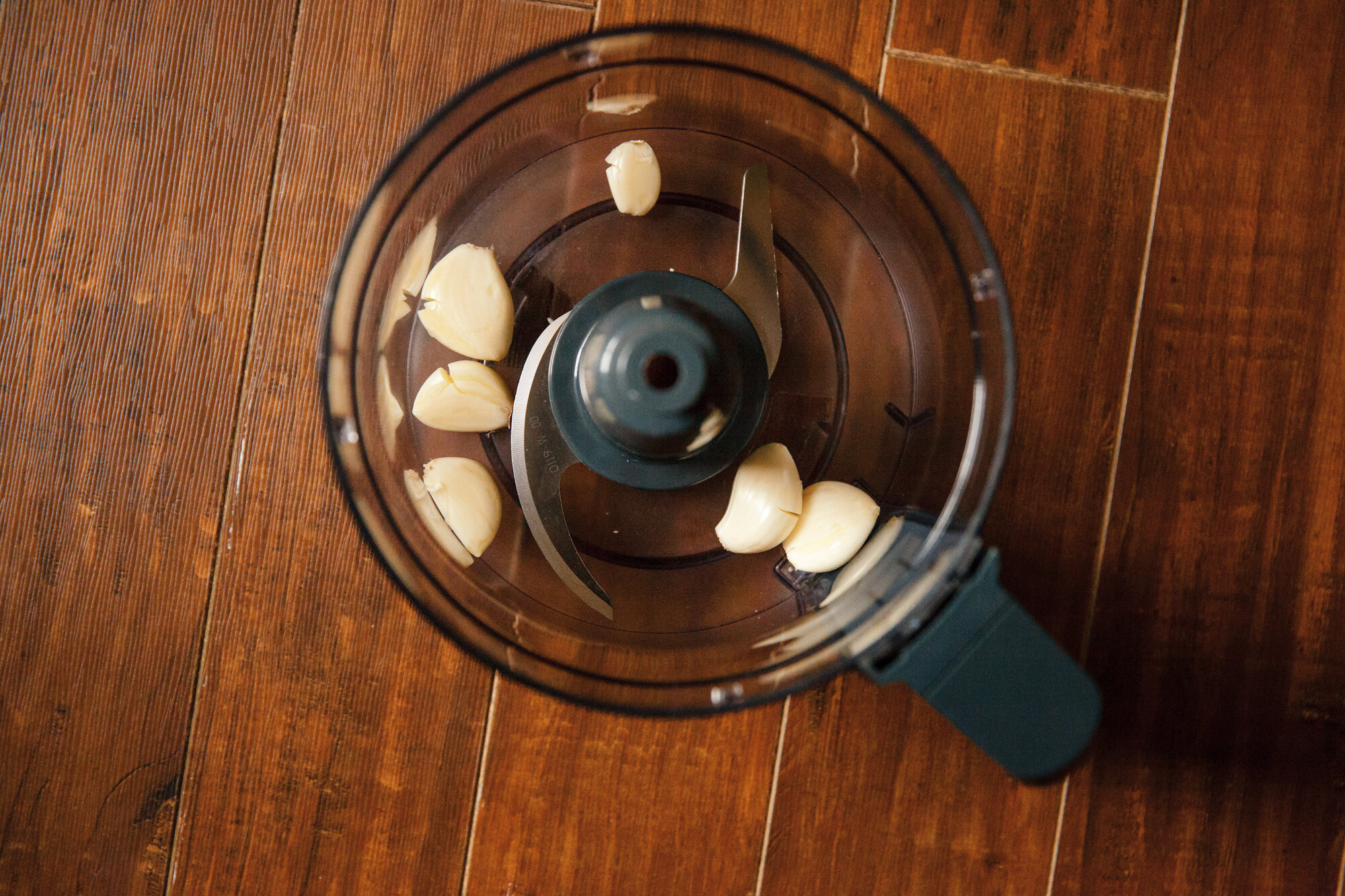
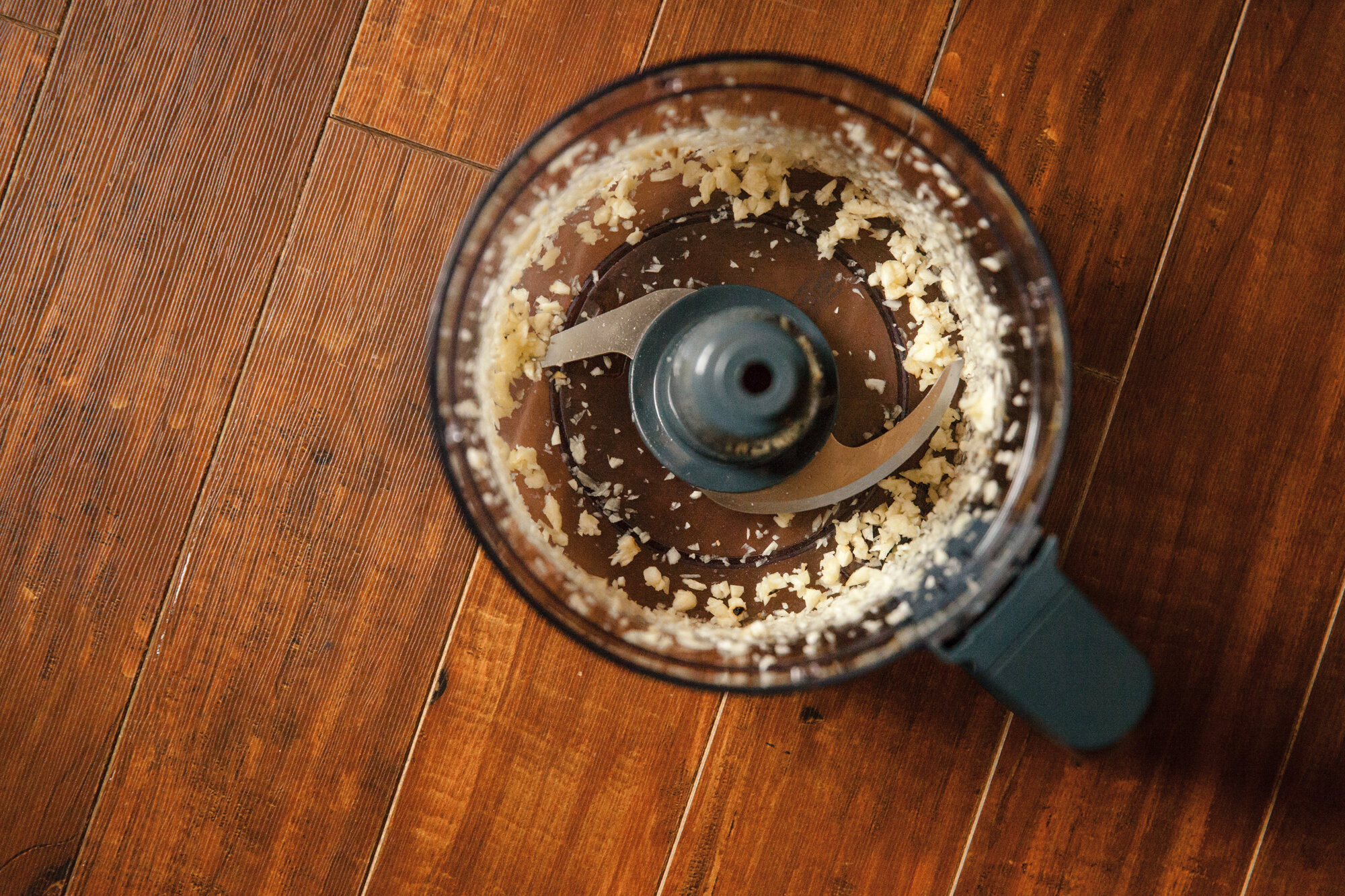
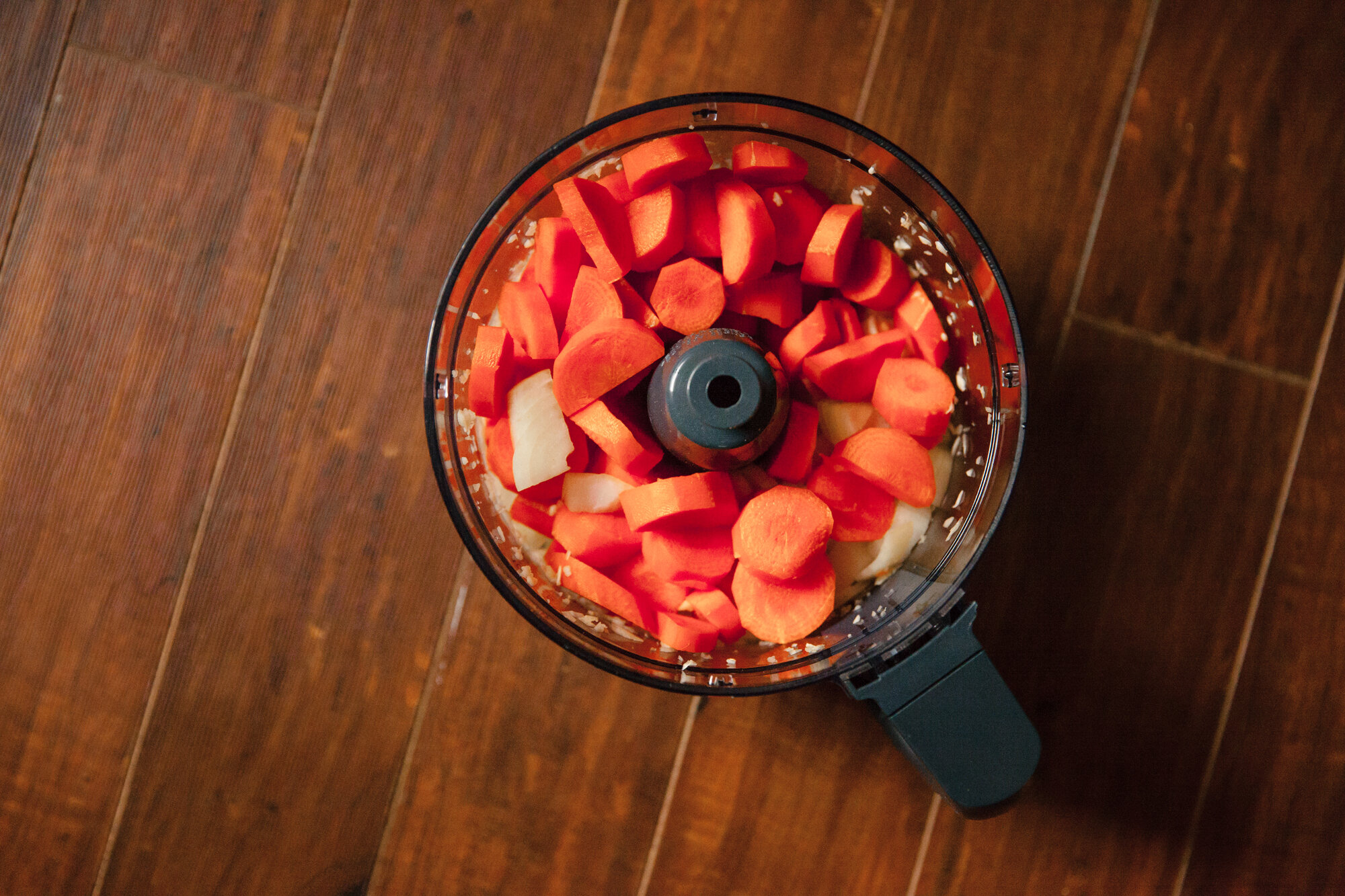

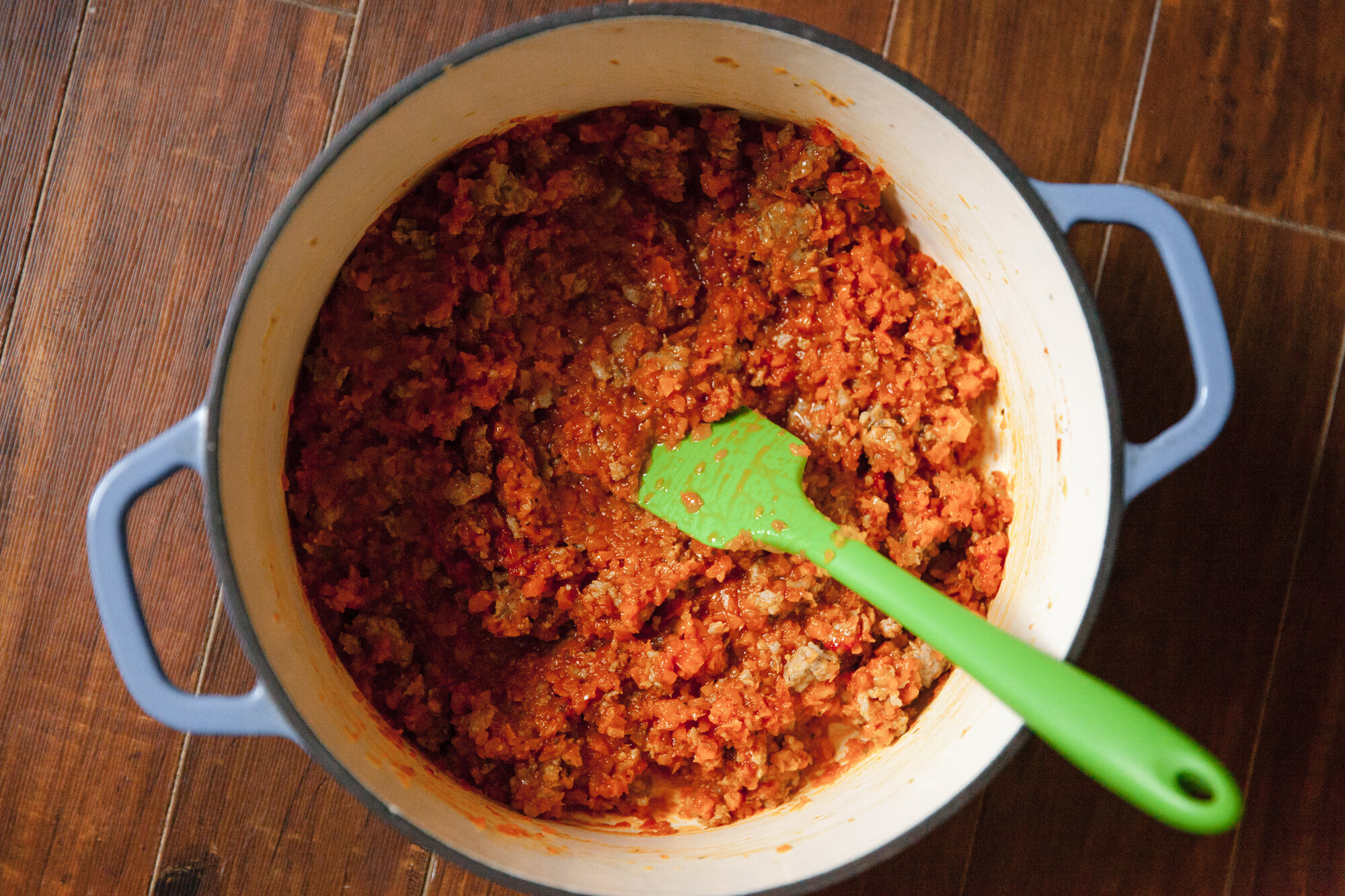
Pasta Fazool
from 3 Recipes for Soup Season - for BC Living
November 10, 2020
This soup is also called pasta e fagioli, but saying pasta fazool is so much more fun. It is hearty, full of veggies and beans, and tiny, tiny pasta pieces. If you need a solid dinner after a hard day at work or a workout, then this is for you. It's super easy, especially if you can chop your veggies in a food processor, and I had almost all the ingredients in my house already.
There are a ton of different variations on this recipe. Add in some sausage for protein, toss in some leafy greens, or maybe change up the beans if you have something different on hand (chickpeas, for example). If you're vegan, skip the sausage or find some vegan sausage to toss in and sprinkle some nutritional yeast on top or vegan Parmesan, instead of regular Parmesan, which is the usual topping.
INGREDIENTS
1 large can of crushed tomatoes, organic if available
1 can of white kidney beans
5-6 cups of veggie stock, homemade from the freezer is perfect for this
3 cloves of garlic, minced
1 onion, finely chopped
2 stalks of celery, finely chopped
2 carrots, peeled and finely chopped
2 mild Italian sausages, optional (vegan, if required)
Handful of kale or other leafy green, roughly chopped, optional
1 tbsp of olive oil
1 tsp of Italian seasoning
Salt and pepper
1 cup of ditalini (short macaroni) pasta (macaroni is a good substitute if you can't find ditalini and brown rice or gluten-free are also good options)
1 tbsp of Parmesan, optional (vegan, if required)
Fresh basil, chopped for topping, optional
INSTRUCTIONS
Finely chop the garlic, onion, carrots, and celery (I did it in a food processor to save time).
Heat olive oil in large pot, then add chopped onion, garlic, celery, carrots and seasoning and stir.
Cook for 15 to 25 minutes until softened and reduced in volume by at least half (the water will evaporate).
If using sausage, remove from casing and add to the pot, breaking it up with a spoon and cooking until it is no longer pink. You may need to use a splash of stock after this to deglaze the pan.
Add crushed tomato and 5 cups of stock and bring up to a boil, then simmer for 15 to 20 minutes (with a lid on) until it reduces slightly. If you want a thicker soup, you can cook it down some more. If it needs to be thinned out some more, add more stock.
In a separate pot, boil some salted water, and then cook the pasta until just al dente. Drain and cool with cold water, then drain again.
In the main pot, add kidney beans, salt and pepper, and stir, cooking for a few minutes until the beans are heated through.
Two options here: you can stir the pasta directly into the pot if you’re going to be consuming it all within the next few days. If you are going to freeze some of the soup, do not add the pasta as when you reheat it, the pasta will expand and become soggy. Instead, cook fresh pasta the day you’re reheating it.
Serve in bowls with additional pepper on top, optional Parmesan, nutritional yeast (or cashew Parmesan) and fresh basil.
NOTE: If using kale or other leafy greens, add them when you add the tomato and stock.
Serves 6
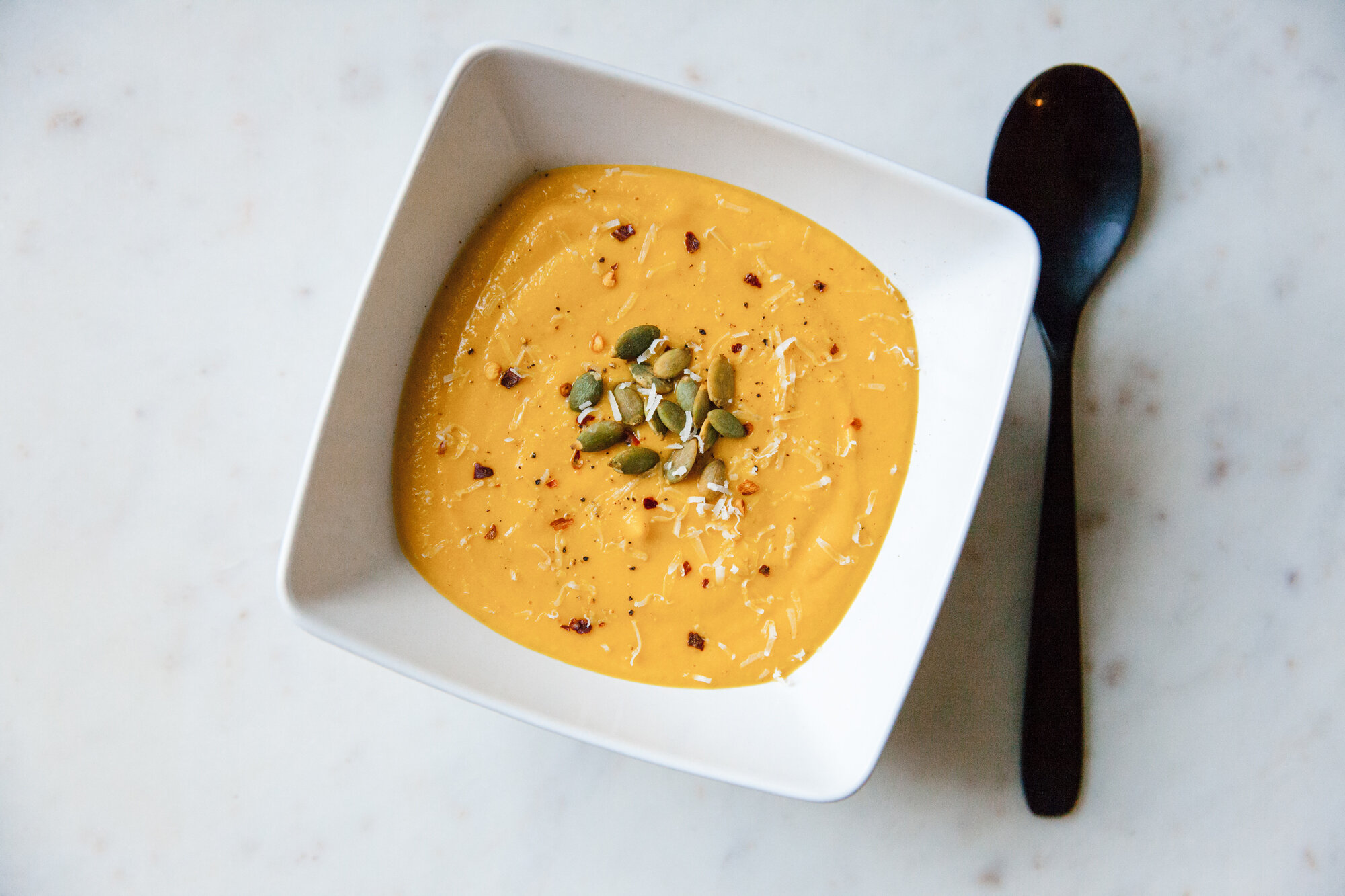
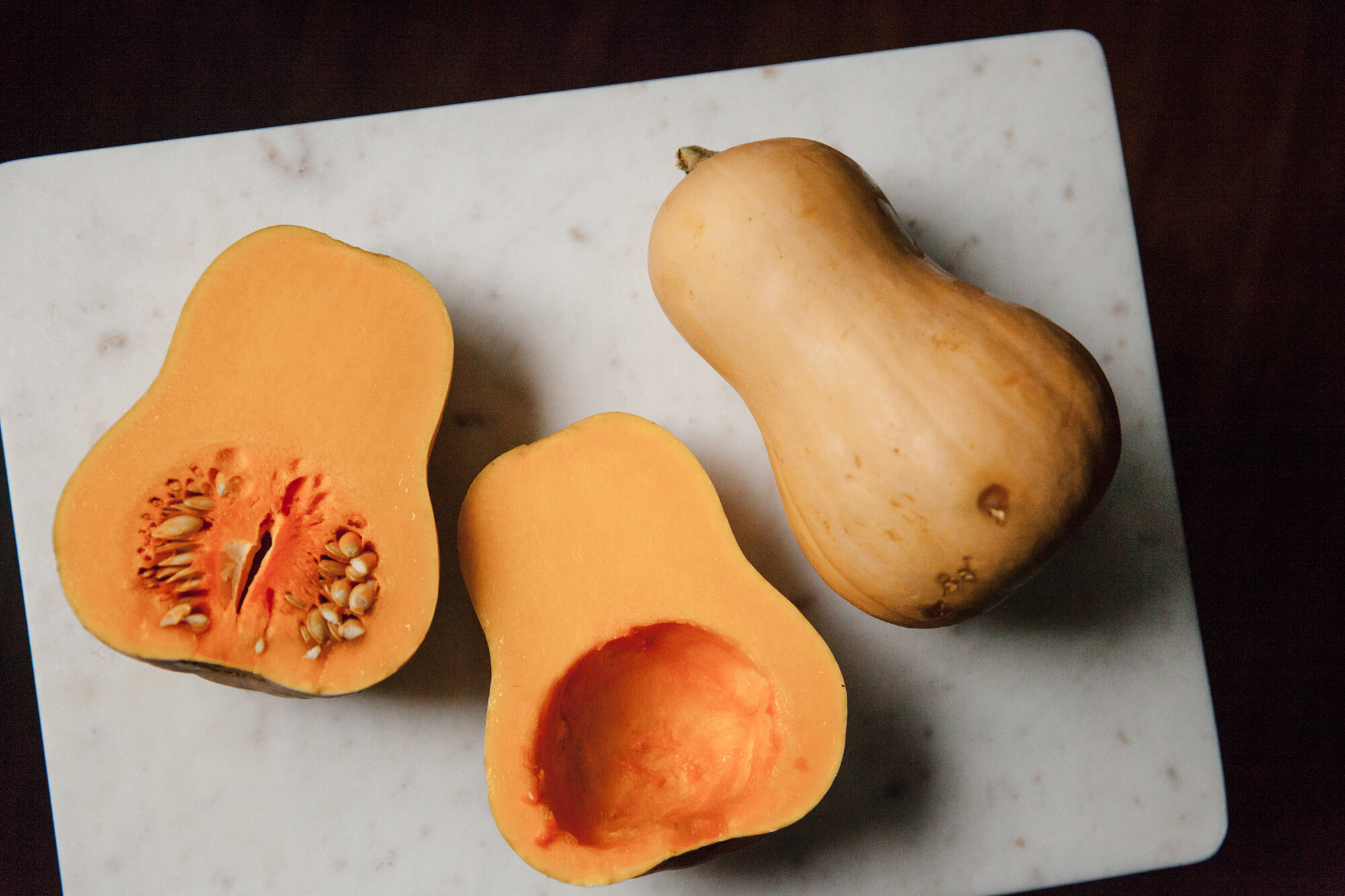

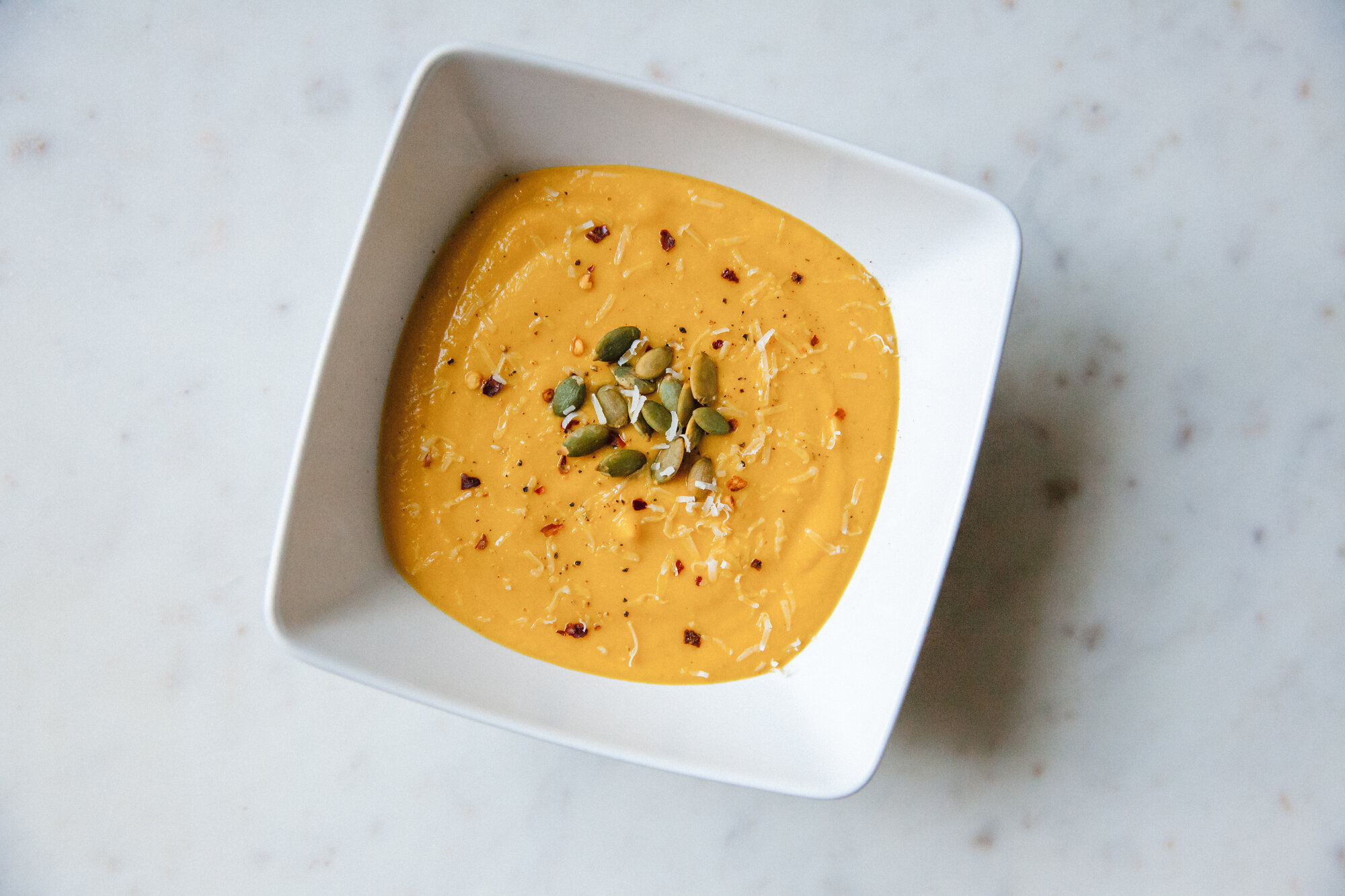
Butternut Squash Soup
from 3 Recipes for Soup Season - for BC Living
November 10, 2020
This one is going to make your house smell heavenly when the squash is roasting in the oven. There's not much more you can do to make this soup any better, except maybe do yourself a favour and make a double batch so you can freeze some for one of the grey winter days ahead. This recipe is dairy- and gluten-free—and vegan if you skip the Parmesan.
INGREDIENTS
Olive oil
Kosher salt
Dried rosemary
Sprinkle of cumin
1 large or 2 small butternut squash, halved and seeded
1 onion, diced
4 cloves garlic, roughly chopped
4 medium-sized carrots, chopped into rough cubes
Fresh ginger, peeled and chopped, about a thumb-sized amount
1 to 2 cups vegetable stock (homemade is best, but low-sodium is good too)
1 can coconut milk
1 tbsp cumin
Salt and pepper to taste
Optional toppings: red pepper flakes, pumpkin seeds (pepitas), Parmesan
INSTRUCTIONS
Preheat oven to 350 F.
Slice squash in half lengthwise and de-seed, then place on a lined baking sheet, face up, and drizzle with olive oil, sprinkle with kosher salt, dried rosemary and cumin.
Place in oven for about an hour, until the squash is nice and soft, especially through the thicker areas, then remove and let cool fully so you can peel off the skin.
While squash is cooling, heat about a tablespoon of olive oil in a large pot, then sauté onions and garlic for a few minutes until the onions become translucent.
Add the chopped carrots, ginger and 1 cup of stock and simmer until carrots are soft, approximately 15 minutes. Add a bit of salt and the tablespoon of cumin, stir, cover and simmer on low.
Peel the skin off the squash with a spoon or scoop and add it to the carrot and onion mixture.
Transfer to a blender and purée until smooth, adding extra vegetable stock if it is too thick (you can also use an immersion blender in the pot to purée).
Transfer the soup back to the pot, pour in the coconut milk, stir and simmer for a few minutes until it is heated through.
Taste and add more salt and pepper if needed.
Pour soup into bowls and top with optional red pepper flakes, pumpkin seeds, Parmesan and a sprinkle of fresh pepper.
Serves 6
3 Recipes for Soup Season
blog post for BC Living
November 10, 2020
Blog Post for Environment 911
Sustainability in B.C.'s Okanagan Wineries
Oct 19, 2020
Sustainability in B.C.'s Okanagan Wineries
Drinking responsibly takes on a whole new meaning
Organic, natural, sustainable, biodynamic—many of these terms used to sound buzzy or were a rarity in wine production. But more and more wineries, especially in B.C.'s Okanagan region, are taking on the task of creating wine in an eco-friendly fashion.
I did a quick 36-hour trip to the Okanagan to have a peak (and of course a few sips) at some of the many places that boast great strides in sustainability. The height of the summer wine touring season may be over, but you can still get many of these wines at restaurants and wine retailers.
Hopefully this is a starting point for your next trip to wine country to sample, learn and pick up these more eco-friendly bottles...
1. Okanagan Crush Pad
Okanagan Crush Pad has a variety of labels under its umbrella: Haywire, Free Form, Narrative and the most recent edition, Bizou + Yukon.
Free Form was launched in 2018 to celebrate the winery becoming certified organic—and has some of my new favourite natural wines (I’m also partial to the labels with the design by Vancouver’s Scott Sueme and the paper being made of stone).
The vineyard has a modern design and the patio set-up, which is super-sized for COVID, allows you to sit and choose from set curated flights (much like a beer sampler) with all the information you could desire about what it is you’re drinking, and the science and technique behind how it's made.
After getting some bottles to go, I suggest you take the self-guided tour around the fields next to the winery. You’ll pass by the chickens and ducks hanging out in a pen complete with a coop made with wine barrels.
Click here for where to buy/drink and the wine shop.
2. Echo Bay, Else Wines, and Rigour & Whimsey
It was recommended that I visit Echo Bay winery, as there were some awesome things in sustainability going on. At the helm of the family winery is head winemaker Kelsey Rufiange, whose goal is to create a biodiverse vineyard that is self-sustaining.
As a side project, she created Else Wines (as in something else) so she could be creative with her grapes and techniques (with delicious results).
We were able (and lucky enough) to sit out in the back field and sample some vino from both labels, and learn about the family and Kelsey’s history (check out the info on their site).
Also of note, another wine label produced and bottled on the property is Rigour & Whimsey, which fits right in with the organic philosophy of Echo Bay, centering around regenerative farming and responsible agriculture.
Some of the smaller batch wines (like those of Else) are going to be harder to find, but here are the links for stockists: Echo Bay, Else Wines and Rigour & Whimsey.
3. Covert Farms
One of the themes I discovered through our visits is that if a winery is leaning into sustainability, you’re likely to find some feathered and furry creatures around.
Covert Farms acreage is the ultimate experience when it comes to the farm-to-table mentality. On tours of the property, you'll see chickens and roosters, which you can feed, along with a new rescue pig named Delilah, llamas, farm dogs and cattle. Animals at sustainable wineries aren’t there just to look cute: they fertilize, help with pest management and are natural lawnmowers.
And when it’s time to sit and sample, the spread is much like Covert's philosophy—beautifully made wines, from newly released organic to grand reserve bottles, and a feast of locally or in-house made preserves, cheeses, meats, and fruits (pictured at top). The highlight for me was being guided through it all by the very passionate and knowledgeable staff, and hearing about exactly what goes into making their wine.
Click here to for the wine shop.
There were a lot more places we wished we could have visited on our little sustainable winery jaunt, like Summerhill in Kelowna, Orofino in the Similkameen Valley, Ursa Major and Anthony Buchanan in Oliver and Foxtrot in Naramata. The trip was short due to COVID restrictions and the smoke from the wildfires, which was a reminder why it's so important to consider wineries that pride themselves on their biodiversity and responsible practices.




